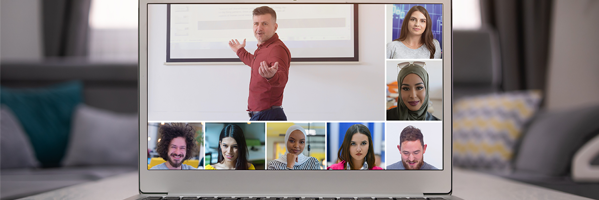Case study 1: Miro Board as a method of collecting feedback
Publication date: 09 Sep 2021
What was the issue?
During the UK COVID-19 lockdowns of 2020, student engagement in higher education in Scotland faced new challenges. Students and staff had to quickly adapt and work in partnership to build digital communities. Additionally, there was a need to improve communication with course representatives and increase their engagement with the student partnership agenda.
Thus, gathering feedback from student representatives was paramount to understanding the issues students experienced in the new online learning approach, and inform enhancements. But surveys became frequent, monotonous, and text-heavy, with many students undertaking research using this data collection method. So, the need for a more interactive platform arose.

How was it solved?
Miro, an online visual collaboration platform for teamwork, in real-time and asynchronously, was used to facilitate discussion and collection of feedback. This was achieved through digital post-it notes from 60 class representatives. A complex whiteboard was built on the Student Learning Experience diagram, and six factors were considered to ensure effectiveness:
Following the introduction of Miro, 92 individual post-it notes were added throughout the academic session, and feedback was passed on to the Academic Strategic Lead, Course Leaders and Heads of Year to take action and ‘close the feedback loop’.
What comes next?
The innovative method of collecting feedback was presented at various meetings, at school and university level, gaining acclaim from fellow students, academic staff, the Students’ Union, and the University’s Department for the Enhancement of Learning, Teaching and Access. It has also been observed that several students from the team started using the digital tool for their own coursework and with their classmates, which perhaps demonstrates the board is effective, versatile and easy to use even beyond its initial purpose.
It was decided to ask students about what blended learning should look like next term to inform pedagogical approaches for the following academic session. Furthermore, the School of Creative and Cultural Business agreed to continue using Miro in the future and other schools got in touch to learn how they could use Miro boards as a method of collecting feedback too.
Publication date: 09 Sep 2021